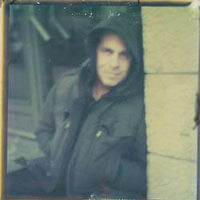In 1979 José Ramón Bas was teaching himself photography when he met photographer Florencio García Méndez, who gave him a helping hand. In 1985 he began formal studies at the Escuela de la Imagen y el Diseño (IDEP) in Barcelona, where he was quickly attracted to contemporary forms of expression and the theme of travel memories. In 1989 he moved definitively to Barcelona and in 1997 he won the La Caixa Foundation’s Fotopress Award for young artists. He began working with the Berini Gallery in Barcelona and in 1998 moved into a studio in the Centro de Arte Contemporáneo Piramidón. After joining Galerie VU’ in 2001, he won the Federico Vender Prize in Italy in 2003, followed by the Arena Foundation Prize in 2004. In 2005 he began teaching the Masters in Creative Photography at EFTI in Madrid. He has exhibited in Holland, Boston, Lisbon and elsewhere.
Source: www.rencontres-arles.com
"He is an incurable traveller. He is a poet; to him it's like breathing. He is unclassifiable and, being in love with spaces and people, he invents objets that preserve the memory of his experiences and his emotions. He is not concerned about building a body of work but rather endeavors to reproduce times spent traveling in Africa, Cuba or Brazil.
During his travels, he photographs, in a playful, compulsive way. Then, when he gets back to Barcelona, he looks at his contact sheets and decides to transform the images that he has recorded into objets. He prints them, with little interest for technique, and then he works on them: he may write on the proof, scratch it, or mistreat it, depending on the mood or inspiration of the moment, before setting it in a resin inclusion and dedicating it, between imagery and sculpture, to its status as an objet.
For him, each negative is an opening onto infinite possibilities, which he will realize in various formats, from the square to the panoramic, and which are to convey his memory of the travel experience.
Then, his parallelepipeds, which are lighter than air, occupy the wall with subtlety and encourage us to dream and be at peace."-- Christian Caujolle, Agence VU’ Galerie
Source: Galerie VU
